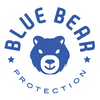Fourth Wave of COVID? What to Expect and How Prepare
Is a Fourth Wave of COVID Coming?
After a year of watching COVID cases rise and fall in three distinct and successive waves, the end of the global pandemic is finally in sight. Vaccines are rolling out at a steady clip, local businesses are reopening, and restrictions are loosening across many states. As of April 5, more than 62 million people are now fully vaccinated in the US--accounting for almost 19% of the population over 18 years of age.
However, this good news is dampened by the reality that the pandemic isn’t over--yet. In fact, eagerness to return to normal has led to an uptick in cases over the past two weeks, signaling the beginnings of a fourth wave in the United States. The New York Times reports an 18% increase in COVID-19 cases over the past 14 days. While deaths have continued to decline and hospitalizations have remained steady during the same period, these metrics are lagging indicators and are likely to rise in the weeks following the increase in cases.
While leading health experts including Dr Anthony Fauci predict that the fourth wave will not be as severe as the previous waves, the uptick is still worrisome. In a recent interview, Fauci described the situation as “a race between the potential for a surge and our ability to vaccinate as many people as we possibly can” (NPR). While ongoing vaccinations will help mitigate the overall impact of the fourth wave, other factors are fueling the new wave, including more lax restrictions, pandemic fatigue, and the presence of the more contagious and more deadly B.1.1.7 variant that ravaged the UK earlier this year.
How to Prepare for a Fourth Wave
From a mental health perspective, the United States is struggling with the pandemic. More than 40% of adults now report symptoms of depression and anxiety (CDC). For many, the idea of yet another wave--yet another period of isolation and heightened concern--feels devastating. Unlike during the first lockdowns, however, we now understand the virus better, and we have a clear blueprint to protect ourselves and our families: maintain physical distance, limit personal contacts, and properly wear masks in public.
The following are 4 ways to prepare and protect yourself and your loved ones during the fourth wave, without losing your sanity:
-
Socialize outdoors whenever possible. The warmer spring weather in most parts of the country will make it easier to meet in small groups outdoors, where the virus is not as easily transmitted. Avoid indoor gatherings with people from other households until you are fully vaccinated.
- Keep wearing your mask--and wear it properly! Personal protective equipment (PPE), including properly worn face masks, is your best defense against the virus. There are many different kinds of masks available to the general public, including disposable masks, reusable and washable cloth masks, and even KN95s that filter 95% of airborne particles.
Ultimately, the best mask is one that fits securely without gaping or slipping and is comfortable enough to wear correctly for hours at a time--or as long as you are around people outside of your household. To achieve a better fit and increase protection, the CDC also recommends layering two masks like a cloth mask over a disposable mask. However, note that KN95 masks should only be worn alone.
- Get vaccinated when you are eligible.
Many states have already opened up vaccination eligibility to all adults over the age of 16, the minimum age that any COVID vaccine has been approved for to this point. By the end of April, 90% of the United States will be eligible to receive a vaccine. Check the New York Times’ list of vaccination eligibility by state, to see whether you are eligible.
Once you’re eligible, there are many ways to find a convenient appointment, including contacting your current healthcare provider or using online tools like Vaccine Spotter and Vaccine Finder. Remember that the COVID-19 vaccine is being administered to everyone living in the United States for free, whether or not you have health insurance (CDC)!
- Continue to exercise reasonable precautions even after you are fully vaccinated. After you get a vaccine, you are not protected right away. Depending on which vaccine you received, you will be considered fully vaccinated either 2 weeks after your one-dose shot (Johnson & Johnson vaccine) or two weeks after your second dose in a two-dose regimen (Pfizer and Moderna vaccines).
In addition, there are still many unknowns with the COVID vaccines, including whether fully vaccinated individuals can transmit the virus to others. To help curtail future waves, continue to wear a mask, and follow CDC guidelines for gathering in groups even after you are fully vaccinated. Learn more about what vaccination means for you.
Let’s Make the Fourth Wave the Final Wave
The good news is: if we continue to wear masks properly, get vaccinated when we are eligible, and continue to exercise caution, we can make the fourth wave the final wave. So keep calm, and mask up!


Leave a comment